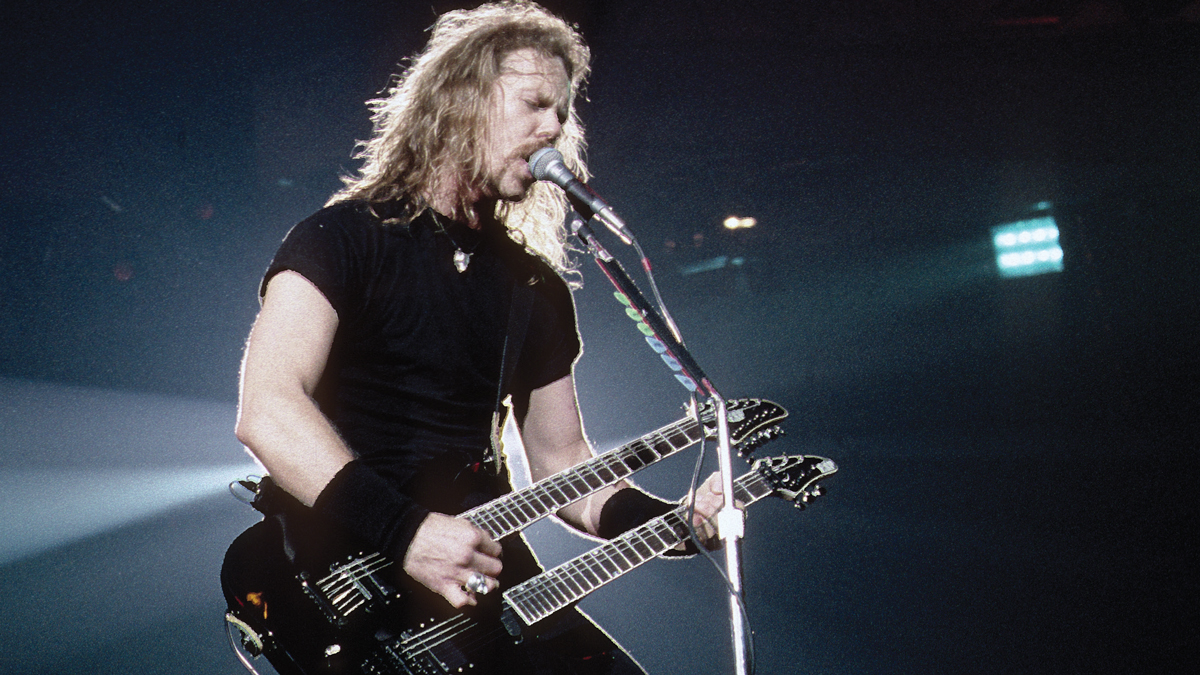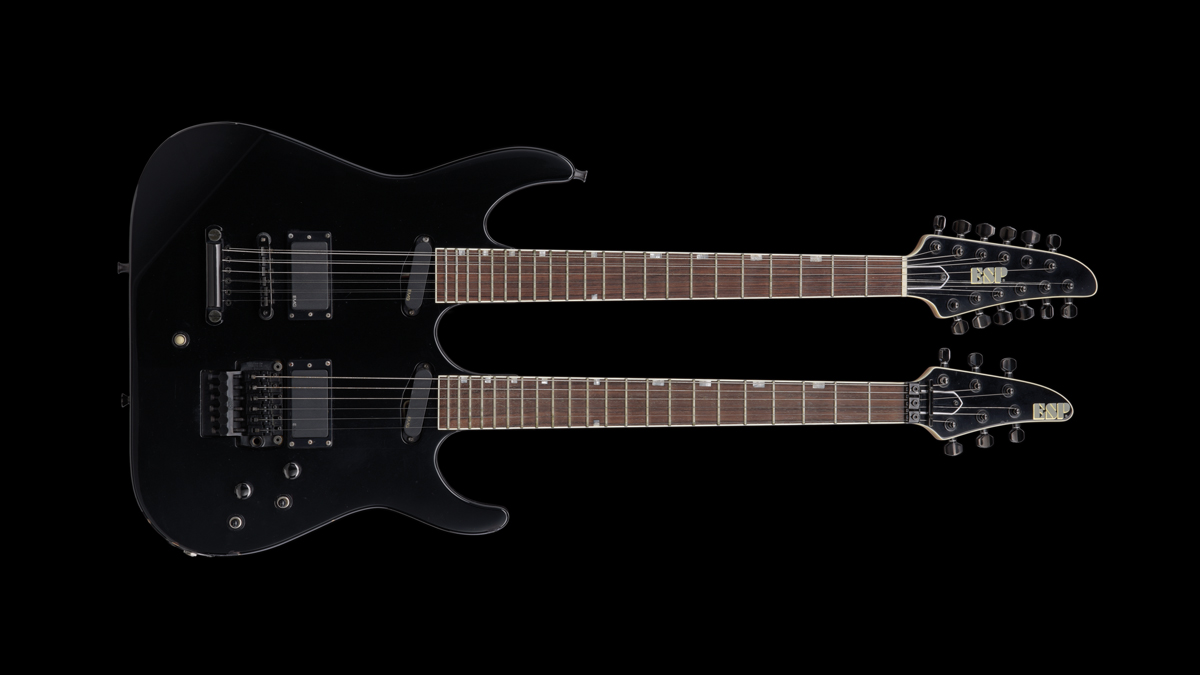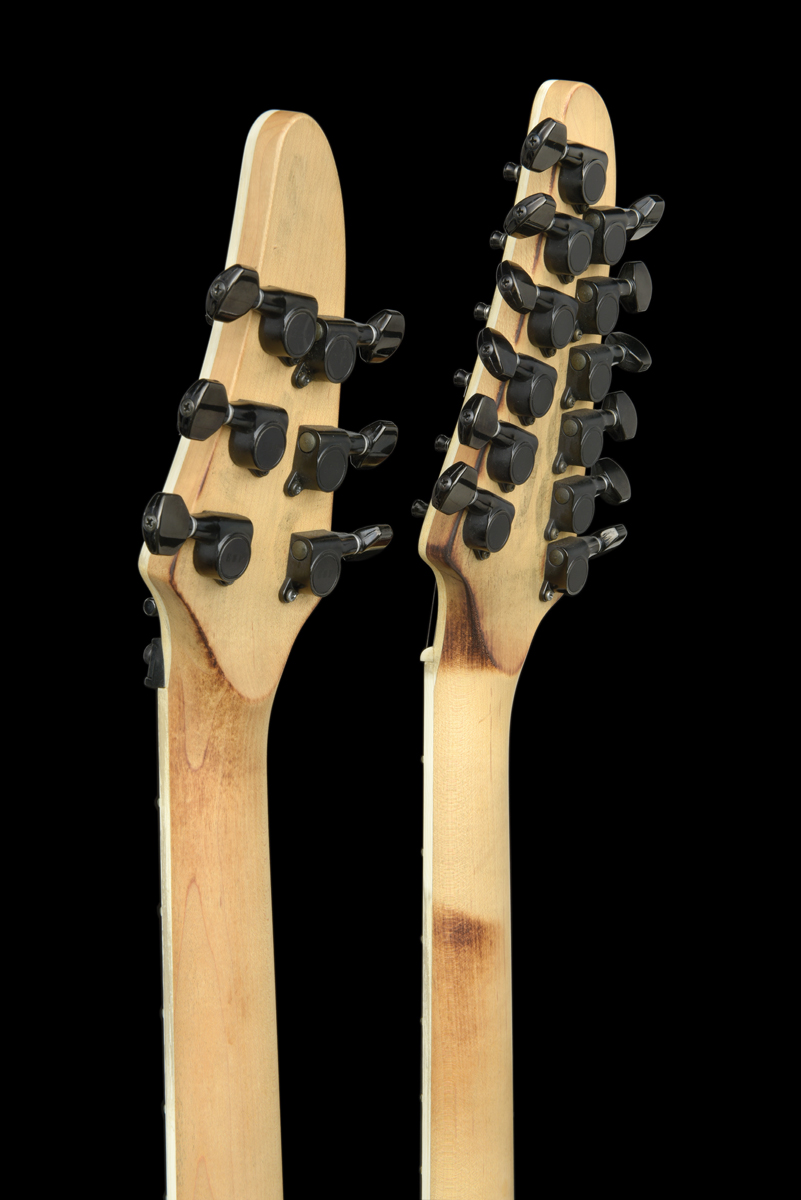“The Double-Neck Montreal makes me think of the smell of your own burning flesh”: James Hetfield opens up about the agony of his 1992 pyro accident, and how his scorched ESP left a lasting legacy on Metallica
In this exclusive extract from his new book, the Metallica frontman describes the experience of getting torched by pyro while playing guitar, and offers a closer look at the damage done to his ESP double-neck during the band’s fateful 1992 performance in Montreal

A thrash metal pioneer in possession of one of the greatest right hands in six-string history, James Hetfield is an icon of the electric guitar – and he’s amassed quite a collection of instruments over the years.
From his earliest Electra Flying V copy – the guitar that changed the course of his history – to his ESP signature guitars, awe-inspiring Ken Lawrence custom creations and enviable vintage models, the Metallica frontman has a remarkable number of guitars to his name, and every one has a story.
Hetfield tells those tales in his new book, Messengers: The Guitars of James Hetfield, detailing his evolution as a guitarist and a human being with each new instrument.
Yet few hold the emotional weight of his ESP Horizon double-neck – aka the electric guitar he was playing when a pyrotechnic charge hit his left side during a 1992 show at Olympic Stadium, Montreal. The guitar shielded Hetfield from the very worst of the flames, and its scorched neck serves as a reminder of the traumatic incident that left him unable to play guitar.
In this exclusive extract, Hetfield recounts his memories of the moment the flames struck, and how he came to terms with the accident that very nearly derailed his career.
1991 ESP Horizon Double Neck Montreal – by James Hetfield

The Double-Neck Montreal makes me think of the smell of your own burning flesh.
I did not have a double-neck Explorer at that time, which I eventually did get and nicknamed the “Coffee Table” because it’s so friggin’ giant and heavy. But for the 12-string sound on Fade to Black, ESP lent me whatever they had, and this was it – the ’89 Horizon, the double-neck I played Fade to Black on every night up to Montreal. It was retired after that.
All the latest guitar news, interviews, lessons, reviews, deals and more, direct to your inbox!
If you look at the photos, you can see I had my hand around the neck where it’s all white, and you can then see where the rest is charred. It was so hot the strings popped. I don’t hate this guitar because of what happened, that’s for sure. I don’t hate the pyro guy, anyone, or anything, really. Things happen for a reason, and for some reason I was meant to stop playing guitar for a little while.
Out of all the stuff that I’ve gone through, breaking wrists, breaking arms, and then this, I’m pretty grateful that we’ve had people to stand in and play guitar. And it’s good thing that, I don’t want to say I can sing, but it’s a good thing I have another job in the band. Job security!

It was not a fun time, that’s for sure, but I’m just glad it wasn’t worse. At the gig, I remember throwing the guitar down, going backstage and just watching the skin bubble up and start to slough off.
I remember putting it in ice water. That felt so great, but as soon as I took it out, it was right back to, well, are flames still on it? There was a panic that set in with me, like, Oh, shit, this pain is not going away. I remember a security guy helping me along. He didn’t speak English, but he knew the right thing to do – let’s get in a van, let’s go to the hospital.
I really remember being in the back seat of the van and, arrgh, the pain. I have huge respect for people that have gone through any kind of major or minor burn on their bodies. Whether you’ve grabbed a hot pan or tried to get the bagel out, all of a sudden you’re hurting. It was to the bone. That was brutal.

This guitar is historic, part of our journey. And this was a couple days after we’d just been down in Mexico having a little break from the tour with Guns ’N Roses because Axl’s voice went out. We had just come back, and this happened.
It’s pretty cool that the guitar neck itself is a natural color, not painted black, so you could see the charring on it. If it was black you wouldn’t have. It probably would’ve just looked like bubbled-up paint.

The accident was unfortunate. At that time, the pyro stuff was not as safe as it is now. There was no extra spotter, so when he looked up to make sure he was good to fire it, everyone looked clear, then he’s unlocking stuff, and then goes to press the button. If there’s a delay of even two or three seconds, we’re onstage, moving around, and I had just forgotten and moved onto the flame.
I didn’t have any fear of looking at the guitar. I had maybe a little more fear of pyro, or playing the song Fade to Black onstage, but the guitar didn’t cause any of this. It’s like the analogy of falling off a horse – you’ve got to get back on. It’s not the song’s fault, it’s not the guitar’s fault, it’s not pyro’s fault either. It’s just circumstances.
Courtesy of Permuted Press. All Rights Reserved.

- Messengers: The Guitars of James Hetfield is available now from Amazon and Metallica.com.
- Michael Astley-BrownEditor-in-Chief, GuitarWorld.com
